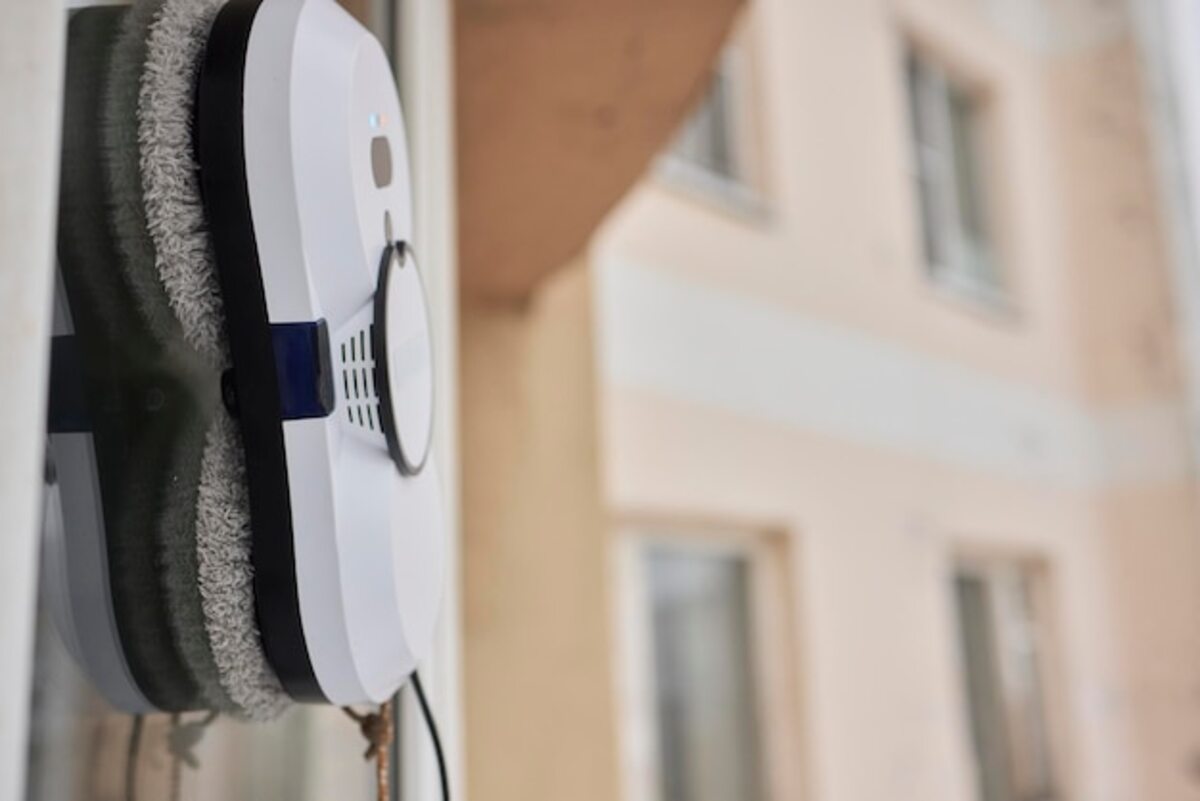Improving home security with smart motion sensors

Improving your home security has never been so accessible and effective. Smart motion sensors not only provide an additional layer of protection, but they also allow you to monitor your space from anywhere. In this article, you will discover how these technological devices can transform the way you protect your home, ensuring peace of mind and comfort for you and your family. Get ready to take the first step towards a safer home!
What are smart motion sensors?
Smart motion sensors are technological devices designed to detect the presence or movement of people or objects in a specific area. These sensors use various technologies, such as passive infrared, microwaves, or cameras, to identify any activity within their range of action. When integrated with security and home automation systems, these sensors not only activate alarms or lights upon detecting movement but can also send instant notifications to your smartphone, allowing you to stay informed about what is happening in your home. Their ability to learn and adapt to normal movement patterns makes them even more effective at distinguishing between everyday situations and potential threats.
The versatility of smart motion sensors makes them an attractive option for enhancing home security. You can install them at entrances, hallways, or outdoor areas, creating a comprehensive system that protects your most vulnerable spaces. Additionally, many models allow customization according to your specific needs; for example, you can adjust the sensor's sensitivity or set schedules for when they will be active. With these advanced features, not only is home security increased, but energy use is also optimized by activating lights only when necessary. In summary, smart motion sensors are an essential tool for those looking to protect their home effectively and conveniently.
2. Benefits of integrating technology in home security.
Integrating technology into home security offers multiple benefits that translate into greater peace of mind for homeowners. Smart motion sensors can detect any unusual activity and send instant alerts to your mobile phone, allowing you to react quickly to potential threats. This remote monitoring capability not only strengthens the physical protection of the home but also provides a sense of control and security by keeping you informed of what is happening in your space, even when you are away. Furthermore, these devices can be part of a broader home automation system, allowing the integration of other technological tools such as surveillance cameras, smart lights, and alarms. This synergy not only improves the efficiency of the security system but can also contribute to cost reductions in insurance by demonstrating an active commitment to property protection. Ultimately, the integration of advanced technology in home security not only modernizes the space but also optimizes preventive measures to keep you and your family safe.
3. How motion sensors work: technology behind the device.
Smart motion sensors operate using a combination of advanced technology that allows them to detect the presence of people or movement in a specific area. Most of these devices use passive infrared sensors (PIR), which detect changes in the thermal radiation emitted by human bodies. When a person moves within the sensor's range, the device identifies that change and activates its alert system, such as a notification to a mobile phone or an audible alarm. This technology is ideal for maximizing efficiency and minimizing false alarms, as it focuses solely on significant thermal variations.
In addition to PIR sensors, some more sophisticated models incorporate additional technologies such as built-in cameras, ultrasonic sensors, and Wi-Fi or Bluetooth connectivity. These features allow not only for motion detection but also for real-time video recording and remote access through mobile applications. This way, you can receive instant alerts when motion is detected in your home and view what is happening from anywhere in the world. This technological integration transforms motion sensors into versatile tools that enhance both security and daily convenience, adapting to your specific needs and providing you with constant peace of mind.
4. Types of motion sensors available on the market.
Motion sensors available on the market are mainly divided into two categories: active and passive. Active sensors emit a signal, such as a laser or ultrasound, which, when interrupted by an object, triggers the alarm. These devices are very effective for detecting motion at long distances and are ideal for large areas like gardens or entrances. On the other hand, passive sensors detect changes in the thermal energy of the environment; that is, they respond to the heat emitted by people or objects within their range. This type of sensor is commonly used indoors, as it can differentiate between humans and animals.
In addition to these main categories, there are various types of technologies that enhance the functionality and effectiveness of motion sensors. For example, infrared sensors are popular for their ability to detect body heat and are often more reliable in avoiding false alarms caused by pets. Other models use microwave technology; these send electromagnetic waves that can penetrate solid objects and offer a broader detection range. There are also options that integrate cameras and connectivity to mobile applications, allowing not only to detect motion but also to visualize it in real-time from anywhere. Choosing the right type depends on the space to be protected and the specific home security needs.
5. Installation and configuration: can you do it yourself?
The installation and configuration of smart motion sensors may seem like a daunting task, but in reality, many models are designed to be installed by anyone, without the need for advanced technical knowledge. Most devices come with clear and easy-to-follow instructions, and many have mobile apps that guide the user through the process. From choosing the ideal location to connecting the sensor to your Wi-Fi network, each step is designed to make the user experience easier. This means you can take full control of your home security without needing to call a professional.
Additionally, installing it yourself will not only save you money on labor costs, but it will also allow you to better understand how these devices work and how you can optimize their performance. By having a clearer vision of the strategic placement and specific configurations, you will be able to customize the system according to your particular needs. Whether adjusting the sensor sensitivity or programming specific schedules for its operation, doing this yourself empowers you and provides greater peace of mind knowing that you have implemented effective measures to protect your home.
6. Best practices to maximize the effectiveness of your sensors.
To maximize the effectiveness of your motion sensors, it is essential to consider their strategic placement. Installing them at key access points, such as main entrances, windows, and hallways, can significantly enhance their ability to detect unwanted movements. Ensure they are installed at an appropriate height and at an angle that allows them to cover the widest possible range. Additionally, avoid obstacles like furniture or decorations that may block the sensor's line of sight. Careful installation will ensure that the devices operate at maximum efficiency and alert you to any suspicious activity.
Another recommended practice is to adjust the sensor's sensitivity according to the specific environmental conditions of your home. Some sensors allow you to customize detection levels to avoid false alarms caused by pets or changes in the weather, such as strong winds or rain. Conduct periodic tests to ensure the device responds appropriately to different situations and adjust its settings as needed. Finally, keeping your system updated with the latest software versions is also crucial; this will ensure not only optimal performance but also that you have the latest security enhancements and integration with other smart devices in your home.
7. Integration with existing security systems: is it possible?
The integration of smart motion sensors with existing security systems is an increasingly popular option among homeowners looking to enhance their home protection. Many modern devices are designed to be compatible with various security platforms, allowing users to add these sensors without needing to replace their current systems. This means that if you already have alarms, cameras, or smart locks, you can simply incorporate motion sensors to expand coverage and increase the overall efficiency of the system. This compatibility is not only convenient but also maximizes your return on investment in security technology.
Additionally, the integration facilitates centralized control through mobile applications or dashboards, allowing management of all aspects of the system from a single location. Sensors can be programmed to trigger immediate alerts in case of detecting movement in sensitive areas, such as entrances or windows. Likewise, some advanced models offer the possibility to create automated scenarios: for example, turning on outdoor lights upon detecting nighttime activity or sending instant notifications to your smartphone if someone enters the defined perimeter. This capability not only enhances security by deterring potential intruders but also provides an additional sense of control over the home environment.
8. Comparison: Traditional Sensors vs. Smart Sensors.
When comparing traditional sensors with smart sensors, it is essential to consider the effectiveness and functionality that each type offers. Traditional motion sensors typically rely on basic technology, such as passive infrared, to detect movement. While they are effective in specific environments, their capability is limited to activating alarms or lights upon detecting presence. This can be useful for deterring intruders, but they lack advanced features like remote monitoring or integration with other smart home devices. Additionally, they often require physical installation and do not offer customization options that cater to the specific needs of the user. On the other hand, smart sensors take home security to the next level thanks to their multiple functionalities. These devices not only detect motion but also allow connection to Wi-Fi networks and send you real-time notifications to your smartphone. You can access integrated security cameras to see what is happening in your home from anywhere in the world and adjust settings according to your preferences. The ability to analyze movement patterns and differentiate between people and pets provides a much more personalized and effective experience. Undoubtedly, investing in smart sensors represents a more modern and efficient solution for those looking to maximize security in their home.
9. Testimonials and real cases: homes that improved their security with smart technology.
Over the past few years, many families have shared their positive experiences after integrating smart motion sensors into their homes. A notable testimony is that of Laura and Miguel, who lived in a quiet neighborhood, but after experiencing an attempted burglary, decided to take action. By installing sensors at strategic points around their property, such as entryways and windows, they not only received instant alerts on their mobile phones when unusual movement was detected, but also felt much safer knowing they could monitor their home from anywhere. This technology has provided them with invaluable peace of mind, allowing them to enjoy their vacations without the constant worry about the safety of their home.
Another notable case is that of the Pérez family, who live in a rural area where security can be a challenge. By installing a complete system with motion sensors connected to smart cameras, they were able to have total control over their property. Thanks to advanced features like facial recognition and automatic notifications for suspicious movements, they have managed to prevent incidents before they occur. The family shares how this investment has not only improved their physical security but also strengthened their sense of community by being able to share relevant information with their neighbors through the same system. These stories are just examples of the positive impact that smart motion sensors can have on everyday life and family peace of mind.



